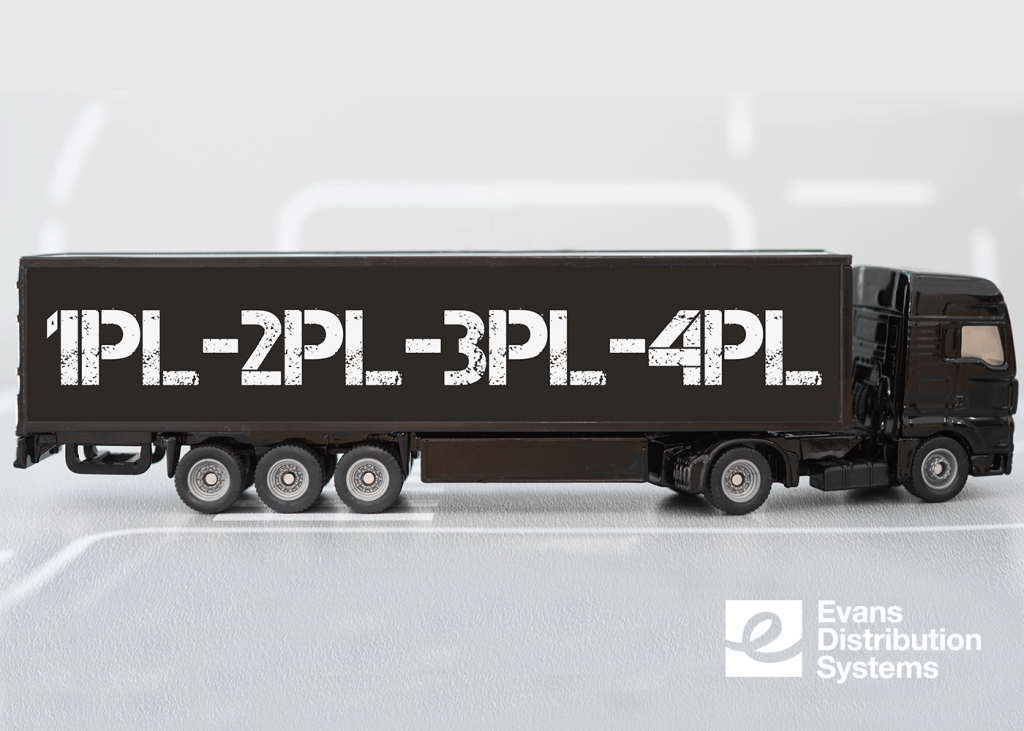Companies often rely on third-party logistics (3PL) and fourth-party logistics (4PL) providers to ensure an efficient and streamlined logistics operation. These strategic partners play a pivotal role in managing and optimizing supply chains, but what exactly sets them apart? Understanding the differences between each type of logistics provider helps businesses make more informed decisions.

The Different Types of Logistics Providers
3PLs and 4PLs are the most common types of logistics providers, but there are variations. The number associated with each type of logistics provider indicates the number of parties involved in the supply chain process.
1PL – First-Party Logistics
A business manages transportation and logistics in-house. This means the company will pick up the raw materials needed for manufacturing, and they will deliver the final product to the customers. This provides the company with total control of the logistics process.
2PL – Second-Party Logistics
A business outsources the transportation of goods. This means the raw materials will be delivered for manufacturing and the final product will be shipped by an outside party. 2PLs own their own transport assets to ship the goods and have no other involvement in the shipper’s logistics beyond that. USPS, UPS, and FedEx are examples of 2PL companies that ship and deliver the products.
3PL – Third-Party Logistics
Third-party logistics is when a business outsources one or more logistics services to another company. 3PLs provide a variety of services including warehousing, kitting, transportation, cross-docking, drayage, and value-added.
4PL – Fourth-Party Logistics
A 4PL is an entity that manages the entire supply chain and acts as the point of contact for multiple logistics service providers. 4PLs outsource the transportation, storage, and fulfillment of products on the manufacturer or shipper’s behalf. 4PLs do not own their own warehousing and transportation assets.
5PL – Fifth-Party Logistics and Beyond
A fifth-party logistics provider is an emerging term that takes logistics management one step further. A 5PL performs the same tasks as a 4PL but for multiple supply chains simultaneously.
6PL refers to utilizing some form of AI technology within a 4PL or 5PL operation to automate some of the tasks. Theoretically, an automated supply chain analyzes data patterns to forecast orders and trigger logistics activities.
The definition of a 7PL is constantly evolving. One widely accepted definition describes it as a combination of 3PL and 4PL services but a 7PL manages the entire logistics process with the option of using their own warehousing and transportation resources.
The Difference Between a 3PL and 4PL
A 3PL offers some form of outsourced logistics services to another company. They focus on the day-to-day operations of shipping goods from the manufacturer or warehouse to the end user. 3PLs usually own their own warehousing and transportation assets. However, it is common for them to also utilize non-asset solutions for transportation or offer dedicated warehousing services, where they manage a facility on another’s behalf.
A 4PL is a company that oversees the entire supply chain as the single point of contact. 4PLs will outsource the logistics process and manage a mixture of warehouses, shipping companies, and agents. A 4PL does not own its own assets, instead relying on its network of contacts in the supply chain industry.
Advantages of a 3PL
By outsourcing these services to a 3PL, businesses gain the 3PL’s experience and expertise to ensure an efficient logistics operation. The business doesn’t need to take on the additional financial risk of managing its own warehousing or transportation assets. 3PLs also offer more flexibility to scale with a business as they grow their customer base or reduce operations during seasonally slow periods.
Disadvantages of a 3PL
When a 3PL takes over parts of the logistics process the business loses some of the control they would have if they kept the operation in-house. Also, since 3PLs may have multiple points of contact, communication challenges may arise for the business when trying to reach the right person for an update.
Advantages of a 4PL
The biggest advantage a 4PL has is the one point of contact over the entire logistics operation. This makes communication with the business much simpler and the 4PL can facilitate collaboration between the separate logistics providers. Additionally, a 4PL will be able to focus on improving efficiency at the different stages of the logistics process.
Disadvantages of a 4PL
4PLs do not use their own assets in the logistics process. Instead, they outsource to 3PLs and carriers to perform these services. This can make it difficult if a business requires any customization to its logistics operation. Also, since there is an additional party involved it will come at a higher cost than if a business decided to work directly with a 3PL.
Which is Best for You?
Depending on the goals of the business either a 3PL or 4PL can be a good choice. If the operation requires customization while the business grows its customer base, then a 3PL is a great solution. However, a 4PL would make sense if the business wants a more hands-off approach by outsourcing the management to a separate party while they focus on its core business.
